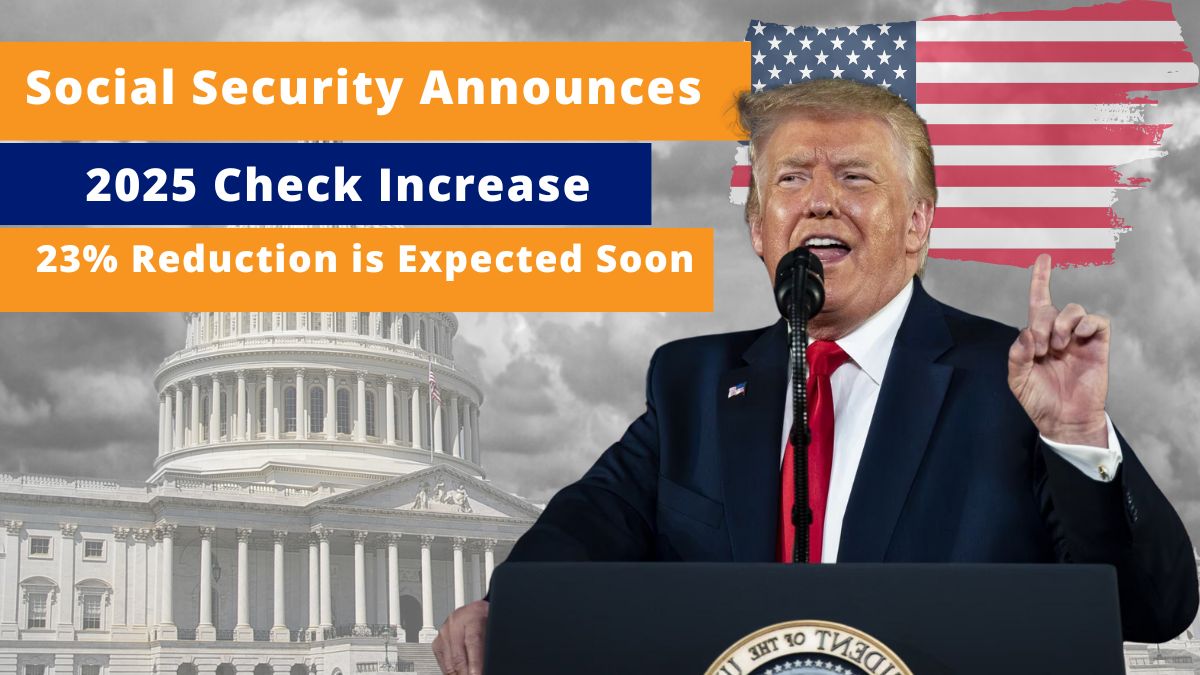Government Aid
Social Security Announces 2025 Check Increase, But a 23% Reduction is Expected Soon

In 2025, Social Security beneficiaries will experience a 2.5% boost in their monthly payments due to the annual Cost-of-Living Adjustment (COLA). However, a significant challenge lies ahead: a potential 23% reduction in benefits by 2033 unless Congress acts to address the program’s funding shortfall.
This article delves into the reasons behind these changes, possible solutions to secure Social Security’s future, and advice for individuals to navigate these uncertainties.
Social Security 2025 Check Increase: A Modest Relief
The 2.5% increase in Social Security benefits for 2025 reflects a smaller adjustment compared to previous years, as inflation has started to stabilize. This adjustment translates to an additional $42 per month on average, raising the typical monthly benefit to around $1,746.
While this increase helps offset some rising costs, it might not fully cover significant expenses like housing, healthcare, and other essentials, which continue to grow faster than general inflation. This disparity highlights the temporary nature of the COLA’s relief.
Why Social Security Faces a 23% Cut by 2033
The projected 23% reduction in benefits by 2033 stems from structural challenges within the Social Security program. Here are the key factors contributing to the funding shortfall:
| Contributing Factors | Impact on Funding |
|---|---|
| Longer Life Expectancy | Beneficiaries collect payments for more years, increasing overall payout obligations. |
| Declining Birth Rates | Fewer workers are entering the workforce, reducing payroll tax contributions. |
| Retirement of Baby Boomers | A surge in retirees adds to the financial burden on the system. |
The Old-Age and Survivors Insurance (OASI) Trust Fund, which supports Social Security benefits, is expected to deplete its reserves by 2033. Without congressional intervention, the program will only generate enough income to cover 77% of promised benefits, resulting in a potential 23% cut.
Proposed Solutions to Secure Social Security
To prevent a significant reduction in benefits, experts have suggested several strategies to address the funding gap:
- Increase Payroll Taxes: Raising the current payroll tax rate of 12.4% could help generate additional revenue.
- Adjust Taxable Earnings Cap: Income above $160,200 (as of 2023) is exempt from Social Security taxes. Raising or removing this cap would bring in more funds.
- Reduce Benefits for High Earners: Cutting benefits for wealthier retirees would ensure resources are directed to those in need.
- Raise the Full Retirement Age: Gradually increasing the retirement age would reduce the number of years people collect benefits, alleviating financial strain.
While these measures are feasible, implementing them requires bipartisan agreement, which has historically been challenging.
Planning for Social Security’s Uncertain Future
Given the uncertainty surrounding Social Security, it’s critical for beneficiaries and future retirees to prepare for potential changes. Here’s how:
- Diversify Retirement Savings: Build a robust retirement plan that incorporates savings, investments, and other income streams beyond Social Security.
- Delay Benefits: If feasible, consider delaying your Social Security claim beyond the full retirement age to maximize monthly payments.
- Stay Updated: Monitor legislative updates and Social Security announcements to adjust your financial planning accordingly.
The 2025 Social Security increase provides some relief to beneficiaries, but the looming 2033 funding shortfall remains a significant concern. Proactive planning and informed decisions are essential for individuals navigating these challenges.
While Congress has options to stabilize Social Security, timely action is necessary to protect the program’s long-term sustainability and ensure financial security for millions of Americans.
FAQs
What is the 2025 Social Security increase?
The 2025 Social Security increase is 2.5%, adding approximately $42 per month to the average beneficiary’s check, raising it to $1,746 on average.
Why is a 23% benefit cut projected by 2033?
This reduction stems from a shortfall in the OASI Trust Fund, caused by longer life expectancies, declining birth rates, and the retirement of the baby boomer generation.
What steps can Congress take to prevent the benefit cut?
Potential solutions include raising payroll taxes, increasing or eliminating the taxable earnings cap, reducing benefits for high earners, and raising the retirement age.
-

 Government Aid3 months ago
Government Aid3 months agoFebruary SSDI Payments: Only This Group Will Receive the First Checks of Next Month
-

 Finance2 months ago
Finance2 months agoRare Bicentennial Quarter Worth $15 Million
-

 Finance3 months ago
Finance3 months agoThe Lincoln Wheat Penny Worth $5 Million- Still Circulating Today
-

 Finance3 months ago
Finance3 months agoRare Coins: The 1964 D Lincoln Penny Errors You Should Know About
-

 Government Aid2 months ago
Government Aid2 months agoIRS to Distribute Stimulus Checks to Millions- Find Out How to Claim Yours
-

 Finance3 months ago
Finance3 months ago1970-D Kennedy Half Dollar- A Rare Coin Worth Over $150,000 Still in Circulation!
-

 Government Aid3 months ago
Government Aid3 months agoThe Complete February SSDI Payment Schedule: Discover When You’ll Receive Your Disability Benefits
-

 Government Aid3 months ago
Government Aid3 months agoConfirmed: What You Need to Know to Collect $1,900 in Social Security by January 31












2 Comments